The Gift of South Dakota
Subscriptions to South Dakota Magazine make great gifts!
Subscribe today — 1 year (6 issues) is just $29!
The Story of the Grass Dance
Sep 7, 2016
Adrian Primeaux brought the art of the grass dance to an international audience with his appearance in a video called “Stadium Pow Wow,” by A Tribe Called Red, a Canadian music group that blends elements of hip hop, dubstep and First Nations traditions. The video, directed by Kevan Funk, features a montage of “day-in-the-life” scenes of Native life in different locales.
Primeaux’s scene was shot in the Badlands of Pine Ridge, where he was raised. We spoke with Primeaux about the story behind the grass dance, how elements of his regalia tell the story, and how a new generation of Native artists is taking indigenous art forms into the future. Here are his responses, in his own words.
The Story Behind the Grass Dance
The story stems from a young boy who was crippled. He told his grandfather that he wanted to run and ride horses and dance like all the other kids, to basically be normal. And his grandpa said well, you can be. We have certain ways and certain spiritual beliefs that would guide you to be that way. So his grandpa told him to go to this sacred area, a fasting ground, and to seek guidance and to fast and pray there, and to sing for four days.
So this boy went to a patch of sweet grass where our people would go for these types of sacred ceremonies. He fasted there on this bed of sweet grass for four days. And through that he was tested by elements, and on the fourth day he was about to give up, and there was a big storm that came. Within this storm he was approached by different elements and different beings. And just about the time he was about give up he was approached by a deer. This deer walked up on him, and this boy being deprived of any kind of food or sustenance for so long, I guess he had to dig deep within his spirituality to kind of maintain his composure.
He was able to have some kind of communication with this deer and this deer was speaking to him through his mind and he was telling him, “Hey what are you doing here? Why are you all alone? As a young boy, why are you out here?” This boy was like, “I can’t run and dance and play like the other kids, so I am seeking guidance. I am seeking help from the Great Spirit.” So this deer started talking to him. “Ok I see that your intention is pure, I am going to give you something. I am going to give you some songs.”
And so he was shown some songs that talk about a story of a buffalo in a storm. Whenever a buffalo encounters a storm, as hard as it gets, it keeps going forward, because the buffalo knows that at the end of the storm there’s always going to be a rainbow. There’s always hope at the end of the storm. So this boy endured, and he was given some grass dance songs. So he took these songs back to his people and this boy, he told his grandpa about these songs and he sang them for him. And little by little, he was able to move his crippled legs. He moved his left and did the same on his right.
Pretty soon he was able to dance. Everything he did on his left, he did on his right. These songs, originally, they were healing songs, and the dance was originally a healing dance.
How the Grass Dance Story Lives Through the Dancer’s Regalia
On [the boy's] outfit he put these buffalo [hide] and gourds. So on my feet, I have red fluff on my feet. That’s symbolic of the buffalo who’s able to weather the storm. The bells are symbolic of the lightning and the storm that the boy had to endure, the sound that it makes.
On my arm I have deer tail armbands, and that’s in remembrance of the deer that spoke to the boy whenever he was instructed and gave him these songs. The rainbow [beadwork and designs] represents the rainbow after that storm that the boy endured. It symbolizes hope, so every grass dance they have a rainbow design. The hoop is the hoop of life, the circle of life.
The grass is symbolic of the sweet grass from where he was fasting. Everything that this boy had to endure was basically incorporated into this outfit. Each of my dance moves is symbolic of balance.
On Being a Millennial and Indigenous Artist
A generation ago, there was a lot more intergenerational trauma that was a little bit more widespread amongst Native peoples. Boarding schools left a really far-spread impact on Native culture. We were never encouraged to dance, to grow our hair long, to use our language, a generation ago. And now we come to 2016 and we have this new generation: people who are creating bands like A Tribe Called Red, people who are creating movies like Avatar — a movie that’s promoting indigenous people.
This generation now, we have a deeper sense of pride. We have our own unique voice as far as dancing. We have a unique voice as far as music. We have a more unique interpretation of dance compared to how it was maybe 20 years ago.
We take some of the core of those old dances and incorporate them into something new, into something that modern people can appreciate. [A Tribe Called Red] takes old elements of what we appreciate as music — the drums, the pow wow songs and they incorporate it into a new style of music. A lot of new generational Natives, and non-Natives as well, can appreciate this Native music. They can appreciate the Native dance. They can appreciate the indigenous lifestyle, and its old elements incorporated into something new.
Along those same lines, my style of dance is the same. I have these old elements of dance, these old appreciations of the nature, the grass, the balance, the life cycles within my hoop, the old appreciation of the walks of life, the animal nation, the plant nation in my dance. Then I incorporate it into a new style, in my own mind — what I see as a young Native man, what I am seeing as beautiful. I also see neon colors as beautiful. I have a plaid base on my outfit; I see plaid clothes as something fresh and new, whereas times ago they would use maybe a buckskin cloth and a beaded vest. My outfit is made from plaid Hollister shirts and neon ribbons. I try to carry the old styles of our cultural ways and incorporate them into something new.
Michael Zimny is the social media engagement specialist for South Dakota Public Broadcasting in Vermillion. He blogs for SDPB and contributes arts columns to the South Dakota Magazine website.


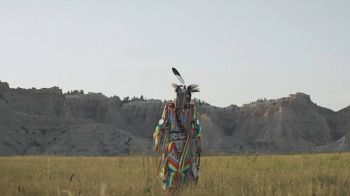
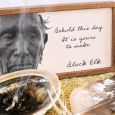
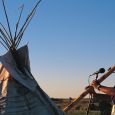
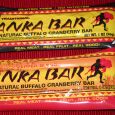
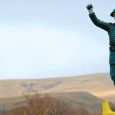

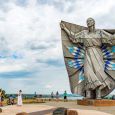


Comments